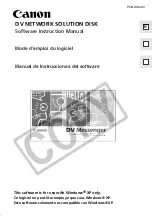
DDL Compiler Commands
Data Definition Language (DDL) Reference Manual — 426798-002
9 -111
TEDIT Command
edit-file-name
identifies an EDIT file. If you omit
edit-file-name
, DDL uses the last
edit-
file-name
and the last
edit-parameter
, if any, specified in the current DDL
session.
edit-parameter
is any valid PS Text Edit command. You can enter multiple commands, separated
by semicolons. After opening the EDIT file, PS Text Edit executes any subsequent
commands until it closes the file.
TEDIT Command Guidelines
The following points are guidelines for using the TEDIT command:
•
Issuing the TEDIT command within DDL is like issuing the TEDIT command from
the command interpreter; the PS Text Edit session is the same, and you can use
all the same functions.
•
When you stop a PS Text Edit process by issuing the EXIT command, control
returns to the DDL compiler.
•
You must close any source file before editing it. For instance, if you have opened a
COBOL source file and entered some text in it, and then you want to view the
source file with the text editor, you must issue the NOCOBOL command before you
issue the TEDIT command.
Default TEDIT File. When you specify
edit-file-name
in the TEDIT command,
DDL passes that name to the current PS Text Edit process and also stores the name. If
you omit
edit-file-name
from the next TEDIT command in the same session, the
DDL compiler passes the stored name to the new PS Text Edit process.
Default PS Text Edit Parameter. When you specify
edit-parameter
in the TEDIT
command, DDL passes that parameter to the PS Text Edit process. The DDL compiler
also stores the parameter.
If you omit
edit-file-name
from the next TEDIT command, DDL passes any
parameter saved from the last TEDIT or EDIT command to the new PS Text Edit
process.
If you specify
edit-file-name
in the next TEDIT command, DDL discards any
previously stored parameter.
















































